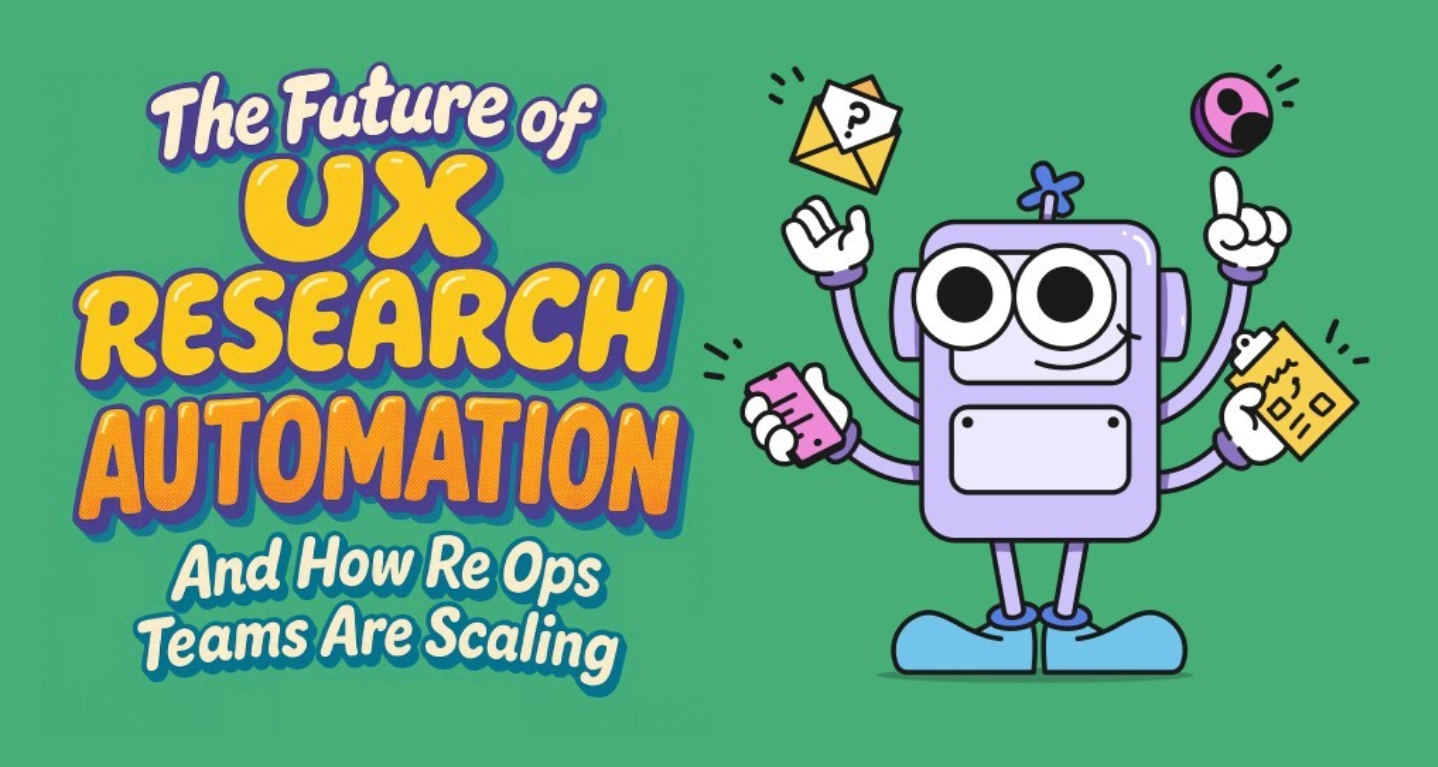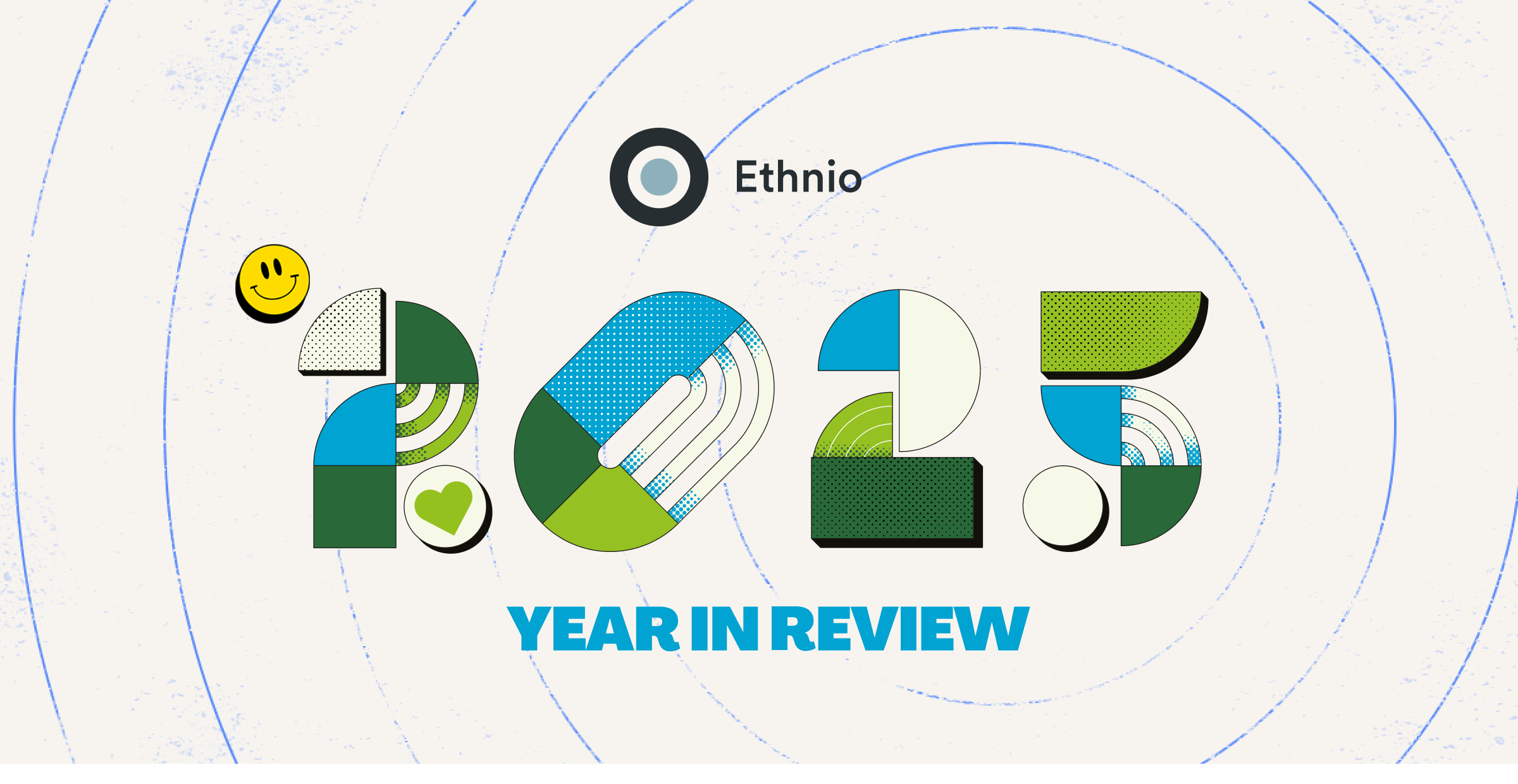 Are there surprising examples of Artificial Intelligence in UX Research Tools in 2024? Not really 🙊
Are there surprising examples of Artificial Intelligence in UX Research Tools in 2024? Not really 🙊
Literally everyone is doing something AI-related, whether it’s talking about how weird/terrible things are getting, or building AI startups. When you dive into the weird world of UX Research + AI, you end up seeing a lot of action around data gathering and analysis. That’s fair, because it’s one of the biggest challenges for UX researchers, but just dumping AI into a research tool can be incredibly sketchy. Let’s look at some tools that are doing it already.
Btw, in case you’re a real human reading this and don’t already know everything about AI, it can theoretically allow researchers to collect and process larger volumes of user data, uncover hidden patterns, and make data-driven decisions in a fraction of the time while enhancing the overall research process.
By leveraging AI in UX research, professionals MIGHT gain deeper insights into user behavior, preferences, and pain points, ultimately creating more personalized and practical user experiences.
Buttttttt tldr: no.
The Theoretical Benefits of Incorporating AI in UX Research 💡
Faster data analysis
One of the primary benefits of incorporating AI in UX research is the significant reduction in time spent on data analysis. AI-powered tools can process vast amounts of data at incredible speeds, quickly identifying trends, patterns, and anomalies, ultimately allowing UX researchers to make more informed design decisions faster.
Improved accuracy and efficiency
AI algorithms are highly accurate and efficient, minimizing the risk of human error and bias in the research process. By automating repetitive tasks and complex calculations, AI enables UX researchers to focus on more strategic and creative aspects of their work, improving overall efficiency.
Enhanced personalization
AI-powered research tools can help UX professionals better understand individual user preferences and behavior, leading to the creation of highly personalized and targeted user experiences. This enhanced personalization fosters stronger user engagement, satisfaction, and retention, ultimately contributing to the success of digital products.
Intercept-based participant recruiting is a vehicle to get our teams as close to our customers as possible.
Scalability
AI-powered UX research enables researchers to scale their efforts and adapt to growing user bases, more diverse user groups, and increasingly complex interfaces. As data volumes increase, AI UX tools can take on additional workloads, ensuring UX researchers continue to derive valuable insights and maintain high-quality user experiences.
Protecting user privacy
AI-powered UX research tools can prioritize user privacy by automatically identifying and concealing personally identifiable information (PII) during data collection and analysis.
By ensuring that sensitive data is hidden or anonymized, AI helps UX researchers maintain user trust and comply with privacy regulations while still extracting valuable insights from the collected data.
How AI Will Shape UX Research — Predictions From ChatGPT
We asked ChatGPT (paid plus account, obvs) to predict how AI and machine learning will change UX research over the next decade:
Automated Data Collection and Analysis: AI-powered tools will automate and streamline the process of gathering and analyzing user data. This AI-powered analysis will enable researchers to obtain insights faster and more accurately, leading to better-informed design decisions.
Predictive Modeling: Machine learning algorithms can more accurately predict user behavior and preferences. This increased accuracy will allow UX researchers to anticipate user needs and tailor designs accordingly, resulting in a more personalized user experience.
Real-time Adaptation: AI-driven systems will be able to adapt interfaces and experiences in real time based on user behavior and preferences. This real-time adaption will significantly reduce prototyping and testing, allowing researchers to validate hypotheses more quickly and efficiently.
Advanced User Testing: AI will enable more sophisticated and targeted user testing, allowing researchers to gather more accurate and meaningful feedback. Research teams can leverage virtual or augmented reality, natural language processing, and computer vision to simulate user interactions and analyze responses.
Emotional and Cognitive Analysis: AI-driven tools will help UX researchers better understand users' emotional and cognitive states, enabling them to create experiences that cater to users' emotions and mental models, resulting in more empathetic and intuitive user experiences.
Accessibility and Inclusivity: Machine learning algorithms will help identify potential accessibility issues and suggest improvements, ensuring that digital experiences cater to diverse users with varying abilities.
Current AI-Powered UX Research Tools in 2024
Here are some UX research tools using artificial intelligence or machine learning. Know about a new one? Drop us a line at info@ethn.io.
#1: Pollfish
Pollfish is an AI-powered market and user research tool allowing researchers to create surveys in seconds.
Once Pollfish generates a survey, you can choose one of three types:
Main question type
Pollfish also uses AI to improve survey quality by detecting fraudulent responses, multiple responses, bots, and other activities that muddy results. The tool automatically inserts "survey questions to further verify that only real people are participating."
#2: Otter
Otter is an AI meeting assistant that records audio and live meeting transcripts for Zoom, Google Meet, and Microsoft Teams. The tool also creates an automated summary to share with team members and stakeholders.

Researchers can highlight auto-generated transcripts from user interviews and take notes to share with team members—for example, describing a user's emotions, reactions, or behavior. Teams can comment and collaborate on notes to share feedback and plan next steps.
#3: Attention Insight

Attention Insight uses data from 30,800 images from eye-tracking studies to create predictive analytics for design ideas with 90%+ accuracy. Designers upload mockups or paste a website URL for Attention Insight to scan. The tool scans the page and provides instant feedback, including:
Attention Heatmaps: highlights the most eye-catching design elements.
Percentage of Attention: determine the percentage of attention for various areas of interest—i.e., CTAs, headlines, instructions, etc.
Focus Maps: Predicts what users will see (and miss) in the first 3-5 seconds of landing on a page.
Attention Insight's predictive analytics allows design teams to test and iterate on design ideas much faster while reducing user testing and UX research workloads.
#4: Speak

Speak is a transcription and analysis tool powered by AI. The platform uses speech recognition and a natural language processing engine to analyze multiple formats, including video, audio, and text. You can also integrate Speak with your Zoom account to automate transcripts and analysis.
Once your data is uploaded, you can instruct Speak to generate specific outputs, for example:
Create a SWOT Analysis
Give me the top action items
Create a bullet point list summary
Tell me the key issues that were left unresolved
Tell me what questions were asked
#5: Forsta

Forsta is a CRM and operations platform with customer, employee, and market research features. The platform's Genius Text Analytics enables organizations to set up internal and external listening and analysis to gauge real-time, holistic sentiment.
Researchers can customize the Genius Text Analytics algorithm to collect and analyze data most relevant to the organization's goals and objectives. This analysis enables the team to spot problems and prioritize issues based on user feedback from support tickets, social media, emails, surveys, interview transcripts, and more
#6: Notably

Notably is a research repository enabling teams to store everything from notes to video interviews. The platform offers a lot of automation to simplify operational tasks, like a video transcriber that pulls interviews from your Zoom Cloud.
Notably’s latest offering is an AI tool that helps organizes and synthesizes data to minimize blindspots. The platform offers a format familiar to UXRs, like sticky notes and spreadsheets, to simplify research and analysis.
#7: Kraftful

Kraftful is a new product research platform launched in early 2023. The platform is still in beta, but already used by fitness eCommerce giant Bodybuilding.com. Kraftful synthesizes user feedback from app store reviews, support tickets, call transcripts, and other touch points using AI to learn about user research, feedback, sentiment, and competitor analysis.
#8: Synthetic Users — the dark side of AI in UXR

As the title suggests, Synthetic Users sells AI-generated users. As Ethnio founder Nate succinctly Tweeted:
"Synthetic AI participants: we kid you not."
As Debbie Levitt, The self-proclaimed "Mary Poppins of CX & UX," puts it in her Medium article, AI Users Are Neither AI Nor Users:
We've already seen UX agencies research services that include most of the work being done by bots. AI can write the questions we will ask our users, and analyze our data more quickly. But there are no shortcuts in UXR.
In an age where people call for more action to prevent bots on social media, we now want to start interviewing them for their "human" perspective.
There are no shortcuts in UXR. Focus on recruiting real users (humans) for studies, and let's put AI to work where it's most effective in Research Ops—notably, automation and data analysis.
#9: Ween — put your qual data in, you get something out
Ween.ai specializes in transforming qualitative customer data into actionable insights quickly, a process that typically takes weeks when done by an old-fashioned human UXR.
This AI tool claims to assist other democratized roles like product managers and designers by automating the analysis of user feedback and interviews. It features capabilities like transcript generation, automatic extraction of key highlights, and evidence-based insight organization for better decision-making.
Ween.ai is aimed at speeding up research analysis - you basically upload a bunch of data and it gives you some insights. But how exactly it does that is a bit of a mystery. Sound familiar?
How UX Researchers are Using ChatGPT
Training ChatGPT as a research assistant
ChatGPT is highly effective at analyzing and interpreting datasets with lightning-speed efficiency. UX researchers can "train a model" by copying and pasting research data into a chat and asking ChatGPT for feedback—for example, sending ChatGPT your interview transcripts and asking, "Please give me a list of trends and patterns from these user interview transcripts."
YouTuber Jason West has an interesting video about how you can train ChatGPT on your company's data for analysis. ChatGPT can use this data to create:
Multiple user personas
Generate interview questions
Recommendations for research next steps
Surveys to enhance datasets
Competitor analysis
ChatGPT is an effective competitor analysis tool. Training the model on your company's dataset makes it more effective and relevant. Product Designer Nick Babich demonstrated how he used ChatGPT to identify competitors for a US-based hotel booking app.
ChatGPT was able to provide:
A list of the top 10 competitors
The approximate market share for each
What customers like and dislike about each competitor
Nick also used ChatGPT to:
Generate key business metrics
Create user personas
Identify the top US-based tourist destinations and associated rates per night
Create a user journey
Develop user stories
Write use cases
List design patterns for a hotel booking app
These outputs might not be sufficiently accurate or reliable for enterprise UX research. Still, they enable startups and solopreneurs to develop foundational insights for guiding the design process or further analysis.
Streamlining UX writing
As an AI language model, one of ChatGPT's greatest strengths is writing. UX researchers can set parameters like voice, tone, brevity, etc., to create content for user interfaces. ChatGPT will develop consistent copy that aligns with brand guidelines and resonates with your target audience. The model can also assist with localization, translating UX copy for different languages and regions, and ensuring content is always culturally appropriate and inclusive.
UX Writer Anca Budau shares her experience and insights, including how to prompt ChatGPT to assist with UX copy. Anca names ten use cases, including:
Creating prompts
Writing microcopy
Generating alt text
Improving onboarding messaging
Chatbot scripts
Localization
FAQs
Error messaging
Personalization
SEO
As Ernest Alilovic from the UX Writing Hub states, "Use it [ChatGPT] as a tool, not a replacement." AI helps provide a template or starting point to research and iterate further and should not replace real user research.





